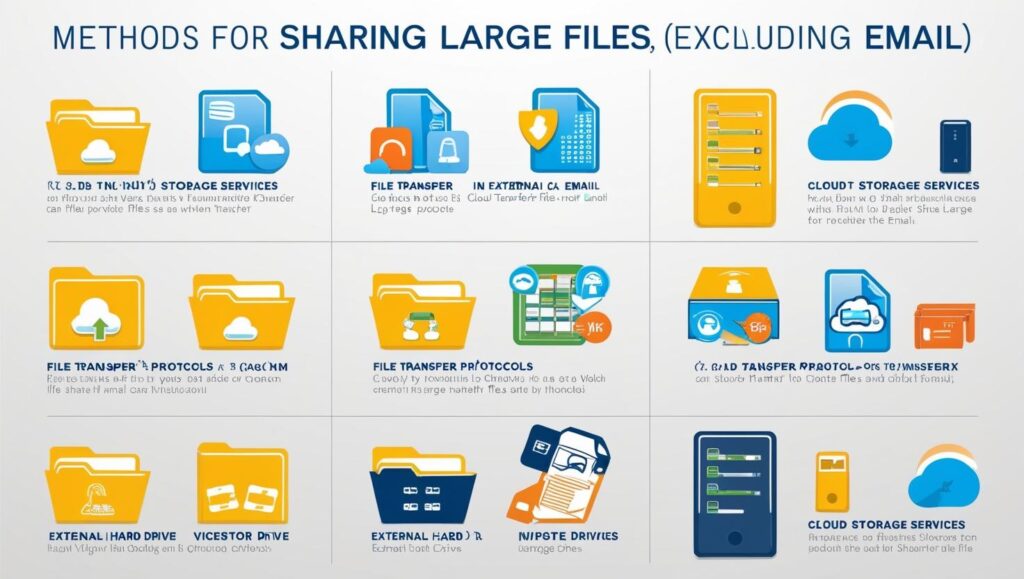In today’s fast-paced digital landscape, the need to share large files efficiently is an everyday necessity for both individuals and businesses. While email remains a popular communication tool, it often falls short when it comes to transferring large files due to attachment size limitations. As technology evolves, so too do the methods for sharing data securely and swiftly. This article explores various alternatives to email for large file transfers, offering insights into the tools that can streamline this process in the digital age.
Alternatives to Email for Large File Transfers
One of the most popular alternatives to email for large file transfers is cloud storage services. Platforms like Google Drive, Dropbox, and OneDrive allow users to upload and share files easily. These services offer generous storage capacities and facilitate collaboration by enabling multiple users to access and edit documents simultaneously. Sharing files via cloud storage is as simple as generating a link and sending it to the intended recipients, bypassing the size constraints of traditional email.
For those seeking a more direct approach, file transfer services such as WeTransfer and Smash provide an efficient solution. These platforms are specifically designed to handle large files, allowing users to send files up to several gigabytes for free or via subscription plans. The process is straightforward: users upload their files, enter the recipient’s email address, and the service sends a download link. This method is especially useful for users who need to send files quickly without creating an account.
Peer-to-peer (P2P) file sharing is another viable option for transferring large files without email. Tools like BitTorrent Sync (now Resilio Sync) leverage the internet’s P2P protocol to transfer files directly between devices. This method is advantageous for maintaining privacy and security, as the files are not stored on a central server. It also allows for faster transfer speeds, as the file is split into parts and downloaded from multiple sources simultaneously.
Simplifying File Sharing in the Digital Age
The digital age has introduced a myriad of file-sharing options that go beyond traditional methods, simplifying the process of transferring large files. With the advent of cloud-based solutions, users can manage and share their data from anywhere in the world with an internet connection. This increased accessibility is particularly beneficial for remote teams and individuals on the move, ensuring that data is always within reach without the need for cumbersome email attachments.
Moreover, integrated file-sharing features in collaboration platforms like Slack and Microsoft Teams have further streamlined the process. These tools allow users to share files within the context of ongoing conversations, reducing the need for separate emails. By consolidating communication and file-sharing in a single platform, these services enhance productivity and keep information organized and accessible to all team members.
In addition, advancements in encryption and security measures have made file sharing safer than ever before. Services now offer end-to-end encryption, password protection, and expiration dates for shared links, ensuring that sensitive data remains secure during transit. As cyber threats continue to evolve, these security features are crucial for protecting information and maintaining user trust. By leveraging these modern tools, individuals and businesses can confidently share large files without relying on traditional email methods.
As we continue to transition deeper into the digital era, the methods for sharing large files have evolved significantly, offering a range of efficient and secure alternatives to traditional email. Whether through cloud storage, direct transfer services, or P2P systems, users now have access to tools that cater to their specific needs and preferences. By embracing these innovative solutions, individuals and businesses can enhance their workflows, maintain security, and ensure that their data is shared seamlessly in our increasingly connected world.


